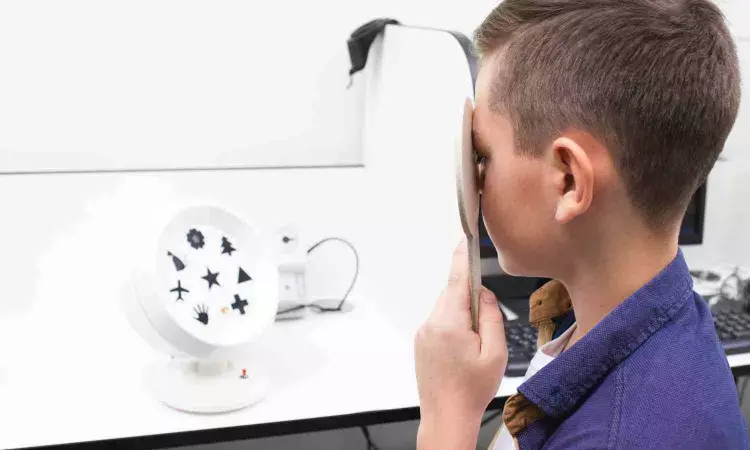- Home
- Medical news & Guidelines
- Anesthesiology
- Cardiology and CTVS
- Critical Care
- Dentistry
- Dermatology
- Diabetes and Endocrinology
- ENT
- Gastroenterology
- Medicine
- Nephrology
- Neurology
- Obstretics-Gynaecology
- Oncology
- Ophthalmology
- Orthopaedics
- Pediatrics-Neonatology
- Psychiatry
- Pulmonology
- Radiology
- Surgery
- Urology
- Laboratory Medicine
- Diet
- Nursing
- Paramedical
- Physiotherapy
- Health news
- Fact Check
- Bone Health Fact Check
- Brain Health Fact Check
- Cancer Related Fact Check
- Child Care Fact Check
- Dental and oral health fact check
- Diabetes and metabolic health fact check
- Diet and Nutrition Fact Check
- Eye and ENT Care Fact Check
- Fitness fact check
- Gut health fact check
- Heart health fact check
- Kidney health fact check
- Medical education fact check
- Men's health fact check
- Respiratory fact check
- Skin and hair care fact check
- Vaccine and Immunization fact check
- Women's health fact check
- AYUSH
- State News
- Andaman and Nicobar Islands
- Andhra Pradesh
- Arunachal Pradesh
- Assam
- Bihar
- Chandigarh
- Chattisgarh
- Dadra and Nagar Haveli
- Daman and Diu
- Delhi
- Goa
- Gujarat
- Haryana
- Himachal Pradesh
- Jammu & Kashmir
- Jharkhand
- Karnataka
- Kerala
- Ladakh
- Lakshadweep
- Madhya Pradesh
- Maharashtra
- Manipur
- Meghalaya
- Mizoram
- Nagaland
- Odisha
- Puducherry
- Punjab
- Rajasthan
- Sikkim
- Tamil Nadu
- Telangana
- Tripura
- Uttar Pradesh
- Uttrakhand
- West Bengal
- Medical Education
- Industry
New Eye-Tracking-Based Treatment as Effective as Patching for Amblyopia in Children, claims study

A recent clinical trial published in the American Journal of Ophthalmology highlighted an innovative approach to treat amblyopia in children. The study compared the effectiveness and safety of a novel binocular eye-tracking-based home treatment system-CureSight, against the traditional patching method. The results suggest that this new treatment is at least as effective as patching and offers a promising alternative for children with amblyopia.
The trial involved a total of 149 children of 4 to 9 years with various forms of amblyopia, including anisometropic, small-angle strabismic, or mixed-mechanism types. The children were randomly assigned to one of 2 groups, where 75 received the binocular treatment using the CureSight system, and 74 were assigned to traditional patching. The binocular group used the CureSight system for 90 minutes a day, 5 days a week, over a 16-week period, amounting to a total of 120 hours. The patching group underwent 2-hour daily patching, 7 days a week for the same duration which totaled up to 224 hours.
The primary goal of the study was on the improvement in visual acuity (VA) of the amblyopic eye from baseline to week 16. The goal was to determine whether the binocular treatment was non-inferior to patching, with a margin of ≤0.10 logarithm of the minimum angle of resolution (logMAR).
The results of the showed that in the modified intent-to-treat (mITT) dataset, the mean improvement in the binocular group was non-inferior to that in the patching group. Also, the difference in improvement between the two groups was 0.034 logMAR, with a 95% confidence interval (CI) ranging from -0.009 to 0.076. The binocular treatment performed almost identically to patching in improving visual acuity.
Interestingly, in the per-protocol (PP) dataset, which included only the children who completed the treatment as planned, the binocular treatment actually outperformed patching. The improvement difference in this dataset was 0.05 logMAR, with a 95% CI of 0.007 to 0.097 that indicated a slight superiority of the binocular approach.
Both groups showed significant improvement in stereoacuity by week 16. However, there was no significant difference between the groups in the magnitude of improvement that suggest both treatments being equally effective in enhancing the stereoacuity. The binocular visual acuity also improved significantly in both groups by highlighting the effectiveness of both treatments in addressing overall vision quality.
Adherence to the treatment protocol was markedly higher in the binocular treatment group, with a median adherence rate of 94.0% when compared to 83.9% in the patching group. This suggests that children found the binocular treatment more acceptable and easier to follow, which could be a crucial factor in real-world settings. Overall, these findings suggest that the CureSight binocular, eye-tracking-based home treatment is at least as effective as traditional patching for treating amblyopia in children.
Source:
Wygnanski-Jaffe, T., Kushner, B. J., Moshkovitz, A., Belkin, M., & Yehezkel, O. (2024). High-adherence dichoptic treatment versus patching in anisometropic and small angle strabismus amblyopia: a randomized controlled trial. In American Journal of Ophthalmology. Elsevier BV. https://doi.org/10.1016/j.ajo.2024.08.011
Neuroscience Masters graduate
Jacinthlyn Sylvia, a Neuroscience Master's graduate from Chennai has worked extensively in deciphering the neurobiology of cognition and motor control in aging. She also has spread-out exposure to Neurosurgery from her Bachelor’s. She is currently involved in active Neuro-Oncology research. She is an upcoming neuroscientist with a fiery passion for writing. Her news cover at Medical Dialogues feature recent discoveries and updates from the healthcare and biomedical research fields. She can be reached at editorial@medicaldialogues.in
Dr Kamal Kant Kohli-MBBS, DTCD- a chest specialist with more than 30 years of practice and a flair for writing clinical articles, Dr Kamal Kant Kohli joined Medical Dialogues as a Chief Editor of Medical News. Besides writing articles, as an editor, he proofreads and verifies all the medical content published on Medical Dialogues including those coming from journals, studies,medical conferences,guidelines etc. Email: drkohli@medicaldialogues.in. Contact no. 011-43720751


